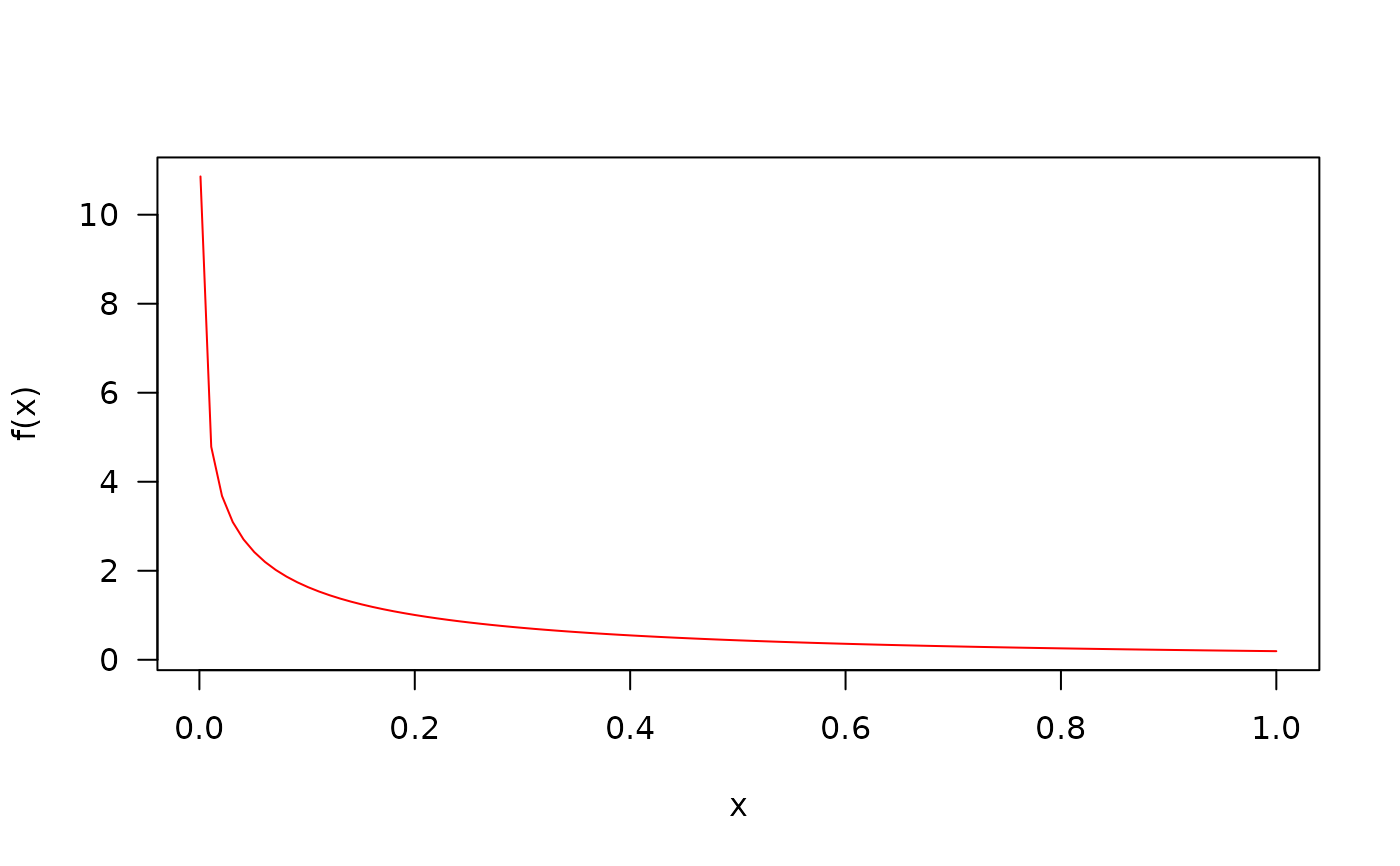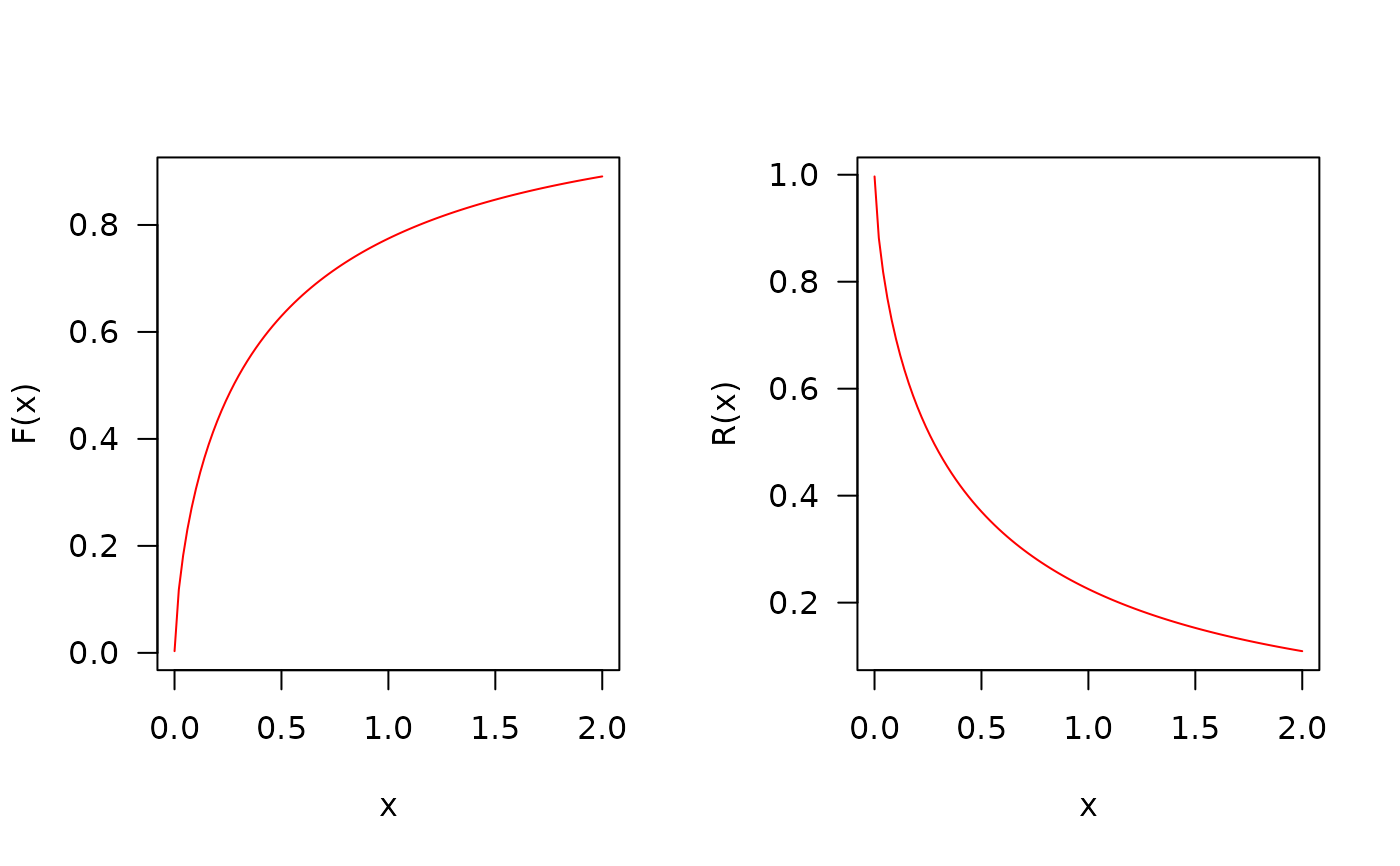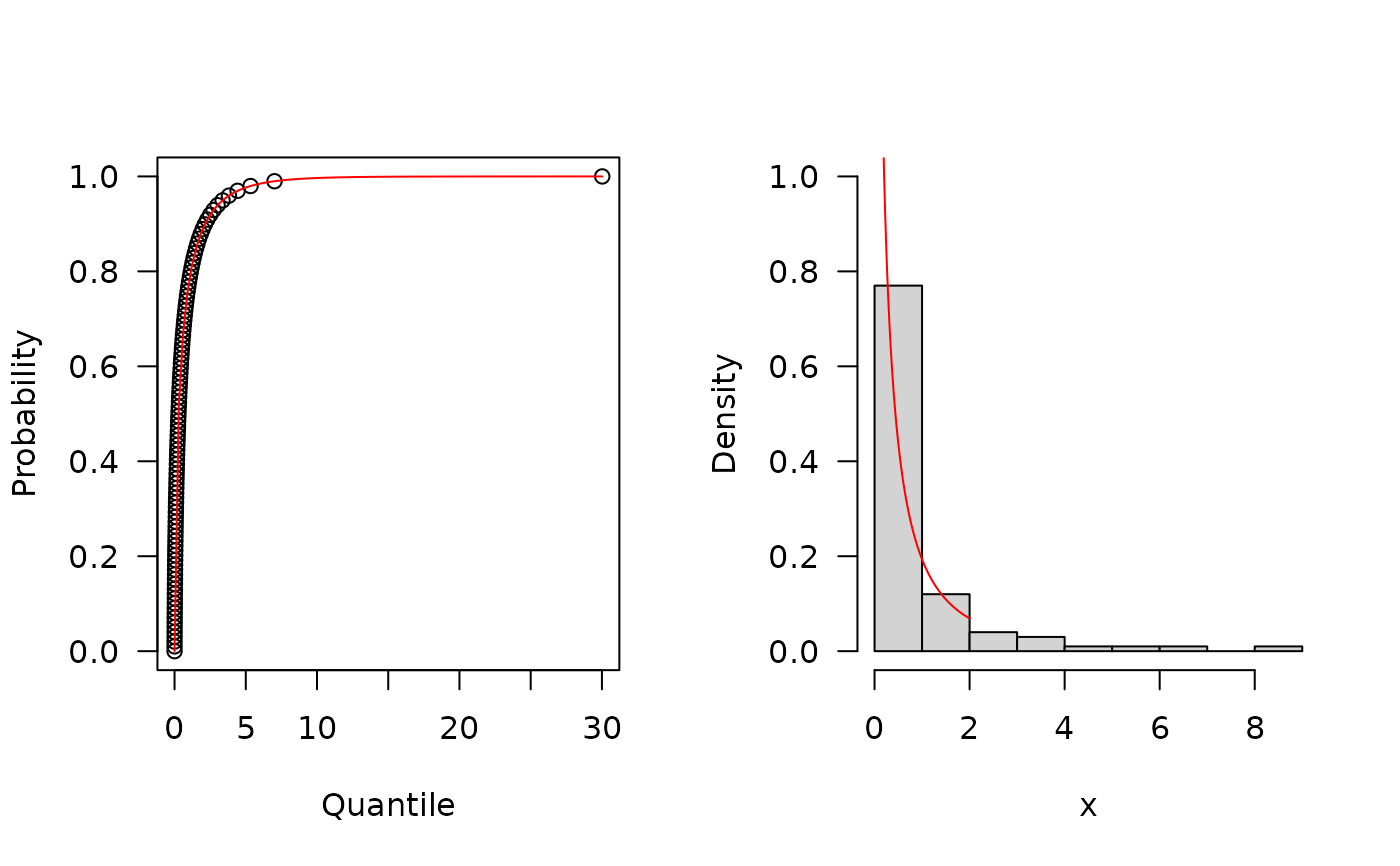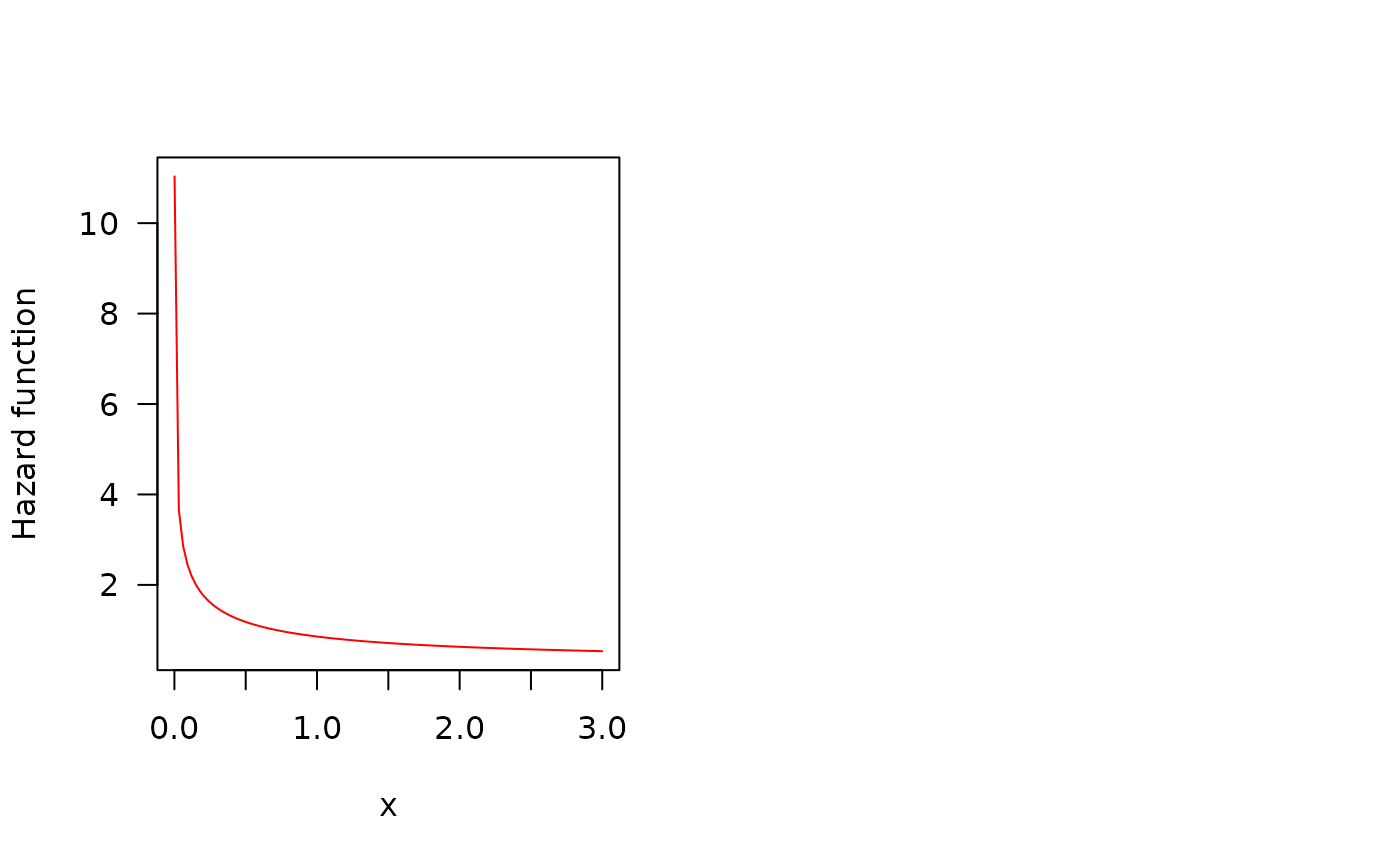Density, distribution function, quantile function,
random generation and hazard function for the Marshall-Olkin Extended Weibull distribution
with parameters mu, sigma and nu.
Usage
dMOEW(x, mu, sigma, nu, log = FALSE)
pMOEW(q, mu, sigma, nu, lower.tail = TRUE, log.p = FALSE)
qMOEW(p, mu, sigma, nu, lower.tail = TRUE, log.p = FALSE)
rMOEW(n, mu, sigma, nu)
hMOEW(x, mu, sigma, nu)Value
dMOEW gives the density, pMOEW gives the distribution
function, qMOEW gives the quantile function, rMOEW
generates random deviates and hMOEW gives the hazard function.
Details
The Marshall-Olkin Extended Weibull distribution mu,
sigma and nu has density given by
\(f(x) = \frac{\mu \sigma \nu (\nu x)^{\sigma - 1} exp\{{-(\nu x )^{\sigma}}\}}{\{1-(1-\mu) exp\{{-(\nu x )^{\sigma}}\} \}^{2}},\)
for x > 0.
Author
Amylkar Urrea Montoya, amylkar.urrea@udea.edu.co
Examples
old_par <- par(mfrow = c(1, 1)) # save previous graphical parameters
## The probability density function
curve(dMOEW(x, mu=0.5, sigma=0.7, nu=1), from=0.001, to=1,
col="red", ylab="f(x)", las=1)
 ## The cumulative distribution and the Reliability function
par(mfrow=c(1, 2))
curve(pMOEW(x, mu=0.5, sigma=0.7, nu=1),
from=0.0001, to=2, col="red", las=1, ylab="F(x)")
curve(pMOEW(x, mu=0.5, sigma=0.7, nu=1, lower.tail=FALSE),
from=0.0001, to=2, col="red", las=1, ylab="R(x)")
## The cumulative distribution and the Reliability function
par(mfrow=c(1, 2))
curve(pMOEW(x, mu=0.5, sigma=0.7, nu=1),
from=0.0001, to=2, col="red", las=1, ylab="F(x)")
curve(pMOEW(x, mu=0.5, sigma=0.7, nu=1, lower.tail=FALSE),
from=0.0001, to=2, col="red", las=1, ylab="R(x)")
 ## The quantile function
p <- seq(from=0, to=0.99999, length.out=100)
plot(x=qMOEW(p, mu=0.5, sigma=0.7, nu=1), y=p, xlab="Quantile",
las=1, ylab="Probability")
curve(pMOEW(x, mu=0.5, sigma=0.7, nu=1),
from=0, add=TRUE, col="red")
## The random function
hist(rMOEW(n=100, mu=0.5, sigma=0.7, nu=1), freq=FALSE,
xlab="x", ylim=c(0, 1), las=1, main="")
curve(dMOEW(x, mu=0.5, sigma=0.7, nu=1),
from=0.001, to=2, add=TRUE, col="red")
## The quantile function
p <- seq(from=0, to=0.99999, length.out=100)
plot(x=qMOEW(p, mu=0.5, sigma=0.7, nu=1), y=p, xlab="Quantile",
las=1, ylab="Probability")
curve(pMOEW(x, mu=0.5, sigma=0.7, nu=1),
from=0, add=TRUE, col="red")
## The random function
hist(rMOEW(n=100, mu=0.5, sigma=0.7, nu=1), freq=FALSE,
xlab="x", ylim=c(0, 1), las=1, main="")
curve(dMOEW(x, mu=0.5, sigma=0.7, nu=1),
from=0.001, to=2, add=TRUE, col="red")
 ## The Hazard function
curve(hMOEW(x, mu=0.5, sigma=0.7, nu=1), from=0.001, to=3,
col="red", ylab="Hazard function", las=1)
par(old_par) # restore previous graphical parameters
## The Hazard function
curve(hMOEW(x, mu=0.5, sigma=0.7, nu=1), from=0.001, to=3,
col="red", ylab="Hazard function", las=1)
par(old_par) # restore previous graphical parameters
